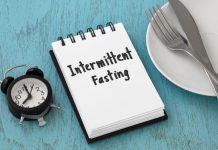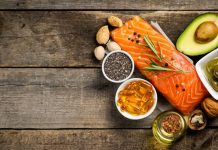
Trying to lose weight but having trouble because you’re always feeling hungry after you eat?
Try chewing your food a bit longer — it just might help you weigh less!
A study published in the Journal of the Academy of Nutrition and Dietetics examined the seminal question: If you slow down while eating, will you fill up faster and thus eat less and lose more?
The researchers created three groups:
- People of normal weight
- People who are overweight
- people who are obese
The test meal: pizza rolls!
All three groups established a baseline “chew rate” – the rate at which they normally consumed their food. Each group member was given 60 pizza rolls and directed to eat until full. At session two, they were asked to double their chew rate.
By doubling the chew rate, they consumed fewer rolls. In the process, they lowered their calorie intake by about 10% which equaled about 70 calories. When they increased their chew rate by 100%, they lowered their intake by 15% or about 112 calories.
This doesn’t sound like much, but compound this by three meals (at least!) daily, then multiply by 7 days weekly. Well, theoretically this could translate into about 30 pounds a year! And all because the test group took their time eating and chewed their food more!
This is far from news for me. Way back in nutrition school I learned about Horace Fletcher, a 19th century “health-food faddist” who was labeled the “Great Masticator.” Wikipedia.com says Horace advocated chewing each mouthful of food a full 32 times – or about 100 times per minute – before swallowing.
“Fletcherizing” your food meant chewing more and eating less.
Hungering for even more about this “chews and lose” phenomenon?
A study published in the American Journal of Clinical Nutrition found a correlation between the chew rate and the levels of important appetite-regulating hormones.
Another study – this one published in the journal Appetite – found that, like Fletcher, more chewing meant less consuming. Volunteers who munched each mouthful of food 35 times consumed 12% less food than volunteers who merely chewed their food 10 times.
It’s simple: Slowing it down gives your belly and brain the chance to feel full on less.
Slowing the pace also helps you taste food better and it aids digestion, too.
Since it needs about 20 minutes for the brain to signal your stomach that you’re full, if you’re chowing down quickly you’re likely to fill up without feeling full. So, what happens is you tend to keep eating!
And what about non-chewed calories?
It’s too, too easy to quickly quaff too many calories. Besides sugar-sweetened sodas, calories lurk in teas, juices, sports drinks, energy drinks and – one of today’s top nemesis for the dieter – coffee drinks! You know the ones I am talking about.
The ones that look more like milkshakes or desserts than coffee.
Many of these festive-looking drinks are loaded with gobs of sugar and fat. Face it. Most people don’t sip – they gulp. This quick chug of calories doesn’t slow down your solid food consumption.
You need to be careful too with thicker soups and ice cream – the things that requiring no chewing but pack plenty of high-calorie bites!
The PREMIER study showed that cutting calories from liquids results in significant weight loss. Just cutting 100 liquid calories daily resulted in a half-pound of weight loss compared to cutting 100 calories from solid food, which only resulted in the loss of a tenth of a pound.
Healthy weight seekers should sink their teeth into these two simple strategies – boost your chew rate and banish calories from liquids! It’s such a simple lifestyle change yet it’s so easy to forget that this stuff really works.
Be sure to resign from the Clean Plate Club. The more food on your plate, the more likely you are to finish it. Serve yourself smaller portions, use smaller plates, help yourself to seconds of veggies and salad, and order appetizer-sized portions when dining out.
Finally, slow it down! Dining is not a sprint. Set a timer and stroll through your next meal.
When you make your meals last longer and take the time to taste the food, you’ll find you’re satisfied with less.
And sometimes less is more.




